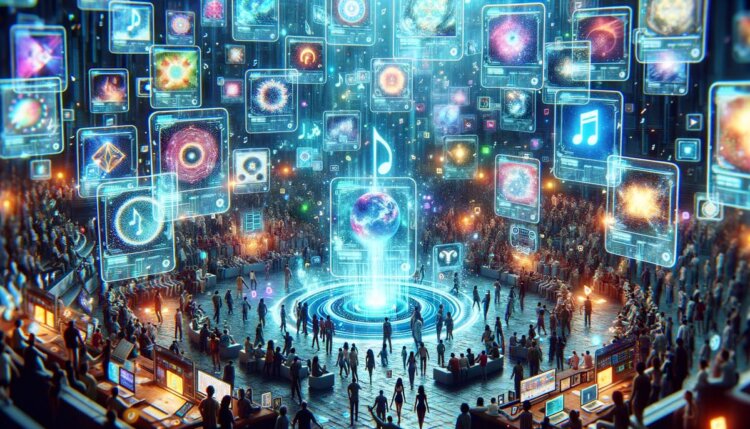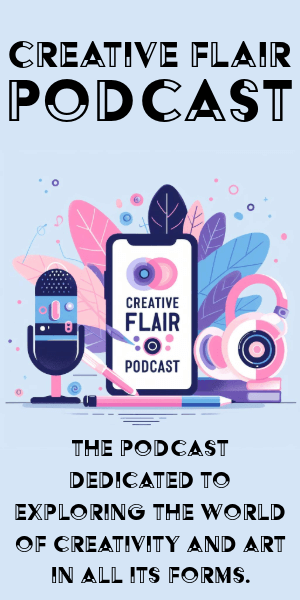Desintermediation in Music Economy
NFTs are shaking up the music industry, letting artists break free from big record labels and tech giants. Instead of being a small fish in the vast pool of Spotify or Apple Music, musicians are now grabbing a life raft with NFTs. It's like selling that old bicycle directly to your neighbor at a garage sale—you keep more cash in your pocket.
This tech revolution gives musicians a chance to reclaim their creative control and see more money coming back to them. With NFTs, artists can sell their music directly to fans, like digital autographs. Fans get a piece of the creative pie, owning a small but special part of a favorite song.
NFTs are changing how music royalties work. Traditionally, royalties were shared like a family meatloaf at a big reunion—songwriters, artists, producers, and labels all grabbing a piece. Now, those digital tokens let artists play their own financial tune.
Musicians can offer special treats within their NFTs, like:
- Access to a secret backstage cam
- An unplugged acoustic jam
- Exclusive artwork
- Limited edition vinyl
It's a bit like Willy Wonka's golden ticket, but with more guitar riffs. Fans get an experience and a connection, while musicians get instant cash and more control.
As the gap closes between artists and audiences, musicians find themselves in the driver's seat for the first time in ages. It's a new gig, and they're playing to their own rhythm now.
Anarcho-Capitalist Influence
Anarcho-capitalism, with its free-market ideals and minimal government involvement, has something to do with NFTs changing the music market. This philosophy cheers for ultimate freedom in economic exchange, and NFTs are its new poster child. Embracing NFTs in music is like musicians finding their inner free bird, soaring past bureaucratic clouds.
The philosophy encourages artists to see their art as valuable assets ready to rock the investment world. A song isn't just a melody anymore—it's a digital investment opportunity. It's about how that single can play on a digital stock market stage.
When musicians view their compositions as NFTs, they're seeing them as unique digital collectibles capable of stirring an economic shift, mixing art with asset value. It's like realizing your guitar isn't just an instrument—it's your pension plan! This view fits with the anarcho-capitalist idea that fewer middlemen mean more potential income and freedom to chart your own financial course.
Musicians can now join this lively tide, embracing the revolution without needing traditional gatekeepers. It's a jam session for economic independence, allowing creative types to dance to their own blockchain beat. The appeal is bypassing traditional royalties and jumping into a digital arena where creativity meets entrepreneurial savvy.
As NFTs encourage musicians to think of their art as an asset class, they adopt a frontier spirit. They become creative entrepreneurs, ready to renegotiate the business side of their artistry. This mindset offers more than a backbeat to the music industry's evolution; it's the driving force letting artists rock their way to a new financial reality.
NFTs in Music Market
NFTs are making waves in the music market, changing how artists interact with fans and earn a living. It's like a tech-savvy wild west, where every artist is carving out their piece of the blockchain frontier. Some artists have already successfully leveraged this innovation to get closer to their fanbase while avoiding the usual pitfalls of traditional music distribution.
Kings of Leon made a splash by releasing their album "When You See Yourself" as an NFT, marking the industry's first full album drop in this format. This wasn't just another piece of merch; it was a collector's item with perks like exclusive artwork and limited edition vinyl. Fans found themselves owning a piece of music history.
Grimes, the genre-defying artist, made headlines by auctioning off almost $6 million in digital art through NFTs. Her crossover appeal between music and visual art flourished, showing that NFTs can span multiple creative formats. For Grimes, it blended sound with visuals, creating a multisensory experience that fans eagerly bought into.
Electronic music creator Justin Blau, known as 3LAU, saw his first NFT drop rake in $11.6 million. This success solidified NFTs as a credible part of music monetization. Through NFTs, he offers fans tracks and tickets to online experiences, including personal engagement with the artist.
These artists are curating an ecosystem where their artistic vision meets the digital economy. It's a far cry from swapping CDs at local shops, but the goal remains the same: connecting artists with their audience in meaningful ways.
As the NFT market grows, it brings both opportunities and challenges. It's not just a passing trend but a new way of thinking about music commerce and creativity. NFTs offer artists more than just exposure—they offer a way to keep the music playing long after the show is over, striking a chord of financial and creative independence.
Role of Fans as Investors
In this new world of NFTs, fans are stepping into a new role: investors. It's a change that flips the traditional fan-artist relationship, with exciting and complex implications.
When fans buy NFTs linked to a musician's work, they're not just getting limited edition content; they're betting on an artist's potential, like buying shares in a company. The NFT becomes more than merch; it's a ticket to join the artist's economic journey. This new role invites fans into the music production process as stakeholders, creating a sense of creative partnership.
For artists, it's a chance to forge deeper connections with their audience and build a community invested in their success. The revenue from NFTs isn't split into tiny pieces, swallowed by record labels and streaming giants. Instead, it's like a Kickstarter for their creativity, with fans providing upfront capital and gaining a piece of the glory.
This shift adds a layer of accountability. When fans invest, they pay closer attention, rooting for the artist not just as a musician but as a financial bet. It's a dynamic rarely seen in music, where support is typically measured by chart rankings or ticket sales.
Potential Pitfalls:
- Artist's worth tied to financial returns
- Pressure to deliver financial results
- Focus shift away from pure artistic expression
Yet, within this challenge lies a unique kind of engagement. Fans as investors might be more inclined to champion lesser-known artists, elevating them from indie to industry. By investing early, fans can propel careers, and artists have a dedicated fanbase cheering (and investing) in their next musical leap.
In a world where every download and stream once felt like a distant transaction, NFTs are bringing intimacy back to the fan-artist relationship. Their investment is not just in music, but in an experience—an emotional buy-in that NFTs can authenticate. As the line between fan and patron blurs, it signals an exciting new act in the music industry.
Post-Streaming Era
The dawn of the post-streaming era, where NFTs are taking center stage, promises to reinvent how music is created, consumed, and celebrated. As artists tune into this new reality, NFTs offer a way to monetize and gain independence, shifting from algorithms and ad revenues to direct artist-fan exchanges.
Streaming has been a double-edged sword, offering artists exposure but with minimal compensation. NFTs hand control back to the creators, letting them set the pace and direction of their careers.
NFTs open avenues for musicians to forge paths previously blocked by streaming giants and record label rules. By shifting revenue generation into their own hands, artists create ways for creativity to meet commerce in balance. With every note, riff, and lyric encapsulated within NFTs, artists can build unique ecosystems around their work—be it exclusive concert experiences, behind-the-scenes footage, or rare acoustic versions.
These tokens foster an environment where the pursuit of streams and downloads changes into a focus on quality, connection, and collector's value. Artists move from the pressure of click-counting to nurturing genuine connections with their audience, encouraging fans to become curators of their collections.
But the transition isn't entirely smooth. Grappling with this NFT landscape requires artists to master new skills in marketing, digital literacy, and community engagement. It's a reimagining of what it means to be a musician in an era of blockchain, where creative freedom and financial gain work together.
Through NFTs, the post-streaming era marks a return to human creativity, where artists engage and invest in exchanges with their followers. They're composing their own financial futures—using NFTs as notes on a staff of economic change.
In this digital crescendo, artists find more than just new revenue streams; they rediscover their voices in a world full of possibility. No gatekeepers can hold them down, no arbitrary algorithms can dictate their worth. The future places power back in the hands of those who create, encouraging musicians to leap boldly into a remix of their own making—with NFTs as their newest instrument.
As musicians embrace NFTs, they find themselves in a new era where creativity and commerce blend seamlessly. This shift offers artists the chance to reclaim control over their work, fostering a direct connection with fans. It's a moment of transformation, where the traditional barriers between artist and audience dissolve, paving the way for a more personal and financially rewarding journey.
- International Federation of the Phonographic Industry. Global Music Report 2021. IFPI; 2021.
- Recording Industry Association of America. Year-End 2020 RIAA Revenue Statistics. RIAA; 2021.
- Cirisano C. NFTs for Music: How It Started, How It's Going & Where It's Headed. Billboard. 2021.






















